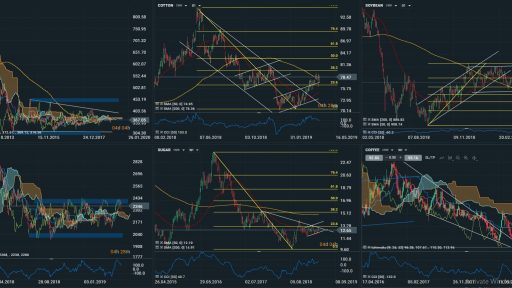- Home
- >
- Trading University
- >
- The three true methods for Commodity trading

The three true methods for Commodity trading

It sounds extremely easy ... there are only three ways to commodize Commodities. But it is true. Of course, under each of these three methods lies a whole set of complex ideas.
Analysts and traders always use one of these three methods when determining whether to be long, short or stay off the market at all
1. Technical Analysis - This is the art of studying the graphs, indicators and, to a greater extent, everything that has to do with the so- "price action". This is based on the theory that "the market knows everything and reflects it on the last price." So, if you understand the price, you can assume with a high percentage of success what will follow. That way, a huge part of speculative traders do their business.
It is believed that these graphs, oscillators, indicators and moving averages can predict the future. This is a very popular idea because it is relatively easy to look at a graph and to build an idea of what will happen. Technical analysts believe that even if you have all the available and material information about a particular market or asset, you will still not be able to predict the exact move and exact "response" to that information. There are too many factors that make it easy to ignore something important.
Observing the markets, it becomes clear that there are tendencies, inertia and patterns that are repeated over time, not the same, but similar in general. Graphics, however, are a mirror to the mood of the crowd, not to the fundamental factors.
So, technical analysis is actually an analysis of mass human psychology.
2. Fundamental Analysis - Here we face the art of studying the production and consumption of the raw material. Fundamental analysis will study crop-related reports to understand how much the government has ordered to produce. Often, analysts come out on the field to create an idea of whether the production of cereals, coffee, cocoa, and even gold or silver is relatively high or low. There are two major aspects of the fundamental analysis - production and consumption.
The United States Department of Agriculture and the Commodity Futures Trading Commission publish periodic production reports.
Another interesting way is the correlation between the price of a raw material and the price of gold. Gold is the storage value. Let's call it a unit. So we can trace how much, or below the unit, the price of gold goes to the price of the raw material. When it is much higher, the price of the raw material is likely to fall. And when it's down below, the price is likely to rise.
As you can see, this has nothing to do with reading the graphics. This is a look at the fundamental situations that exist on the market. Fundamental analysis is the analysis of supply and demand laws.
3. Combination - The combination of technical and fundamental analysis - both are very important - it is very easy to read the graphics - all the information is in front of us. It is certainly not easy to be good at the foundation. Data is difficult to compile, many are unavailable or difficult to analyze. But it still has a huge weight. Graphics do not move the market. Conditions move it. That the market seems ready for promotion does not mean that time has come. That's where the technique comes. To help us identify a change in the trend for a fundamental reason.
The combination of technical and fundamental analysis is best because the two complement each other.
 Trader Aleksandar Kumanov
Trader Aleksandar Kumanov Read more:
If you think, we can improve that section,
please comment. Your oppinion is imortant for us.











